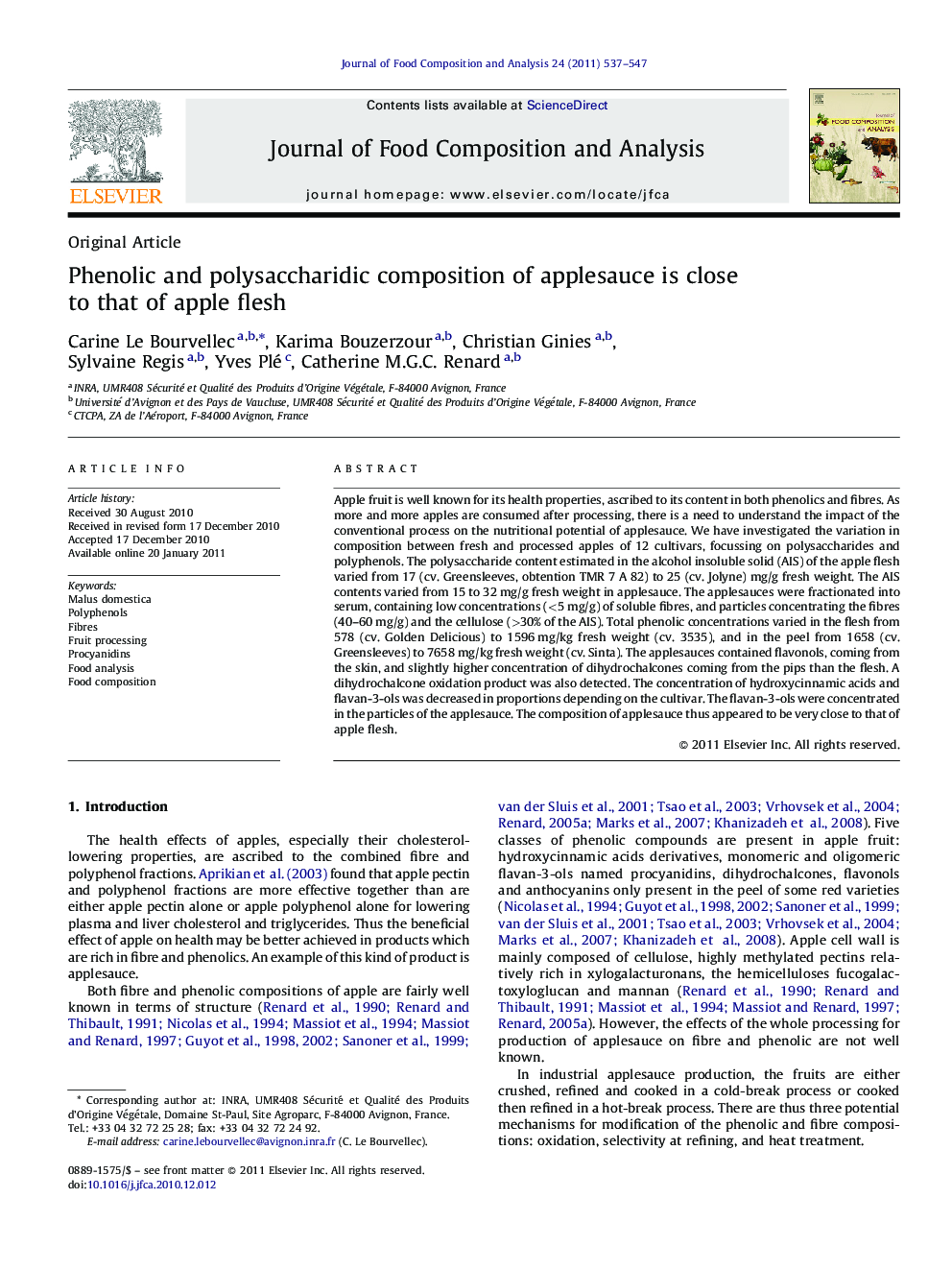| Article ID | Journal | Published Year | Pages | File Type |
|---|---|---|---|---|
| 7620910 | Journal of Food Composition and Analysis | 2011 | 11 Pages |
Abstract
Apple fruit is well known for its health properties, ascribed to its content in both phenolics and fibres. As more and more apples are consumed after processing, there is a need to understand the impact of the conventional process on the nutritional potential of applesauce. We have investigated the variation in composition between fresh and processed apples of 12 cultivars, focussing on polysaccharides and polyphenols. The polysaccharide content estimated in the alcohol insoluble solid (AIS) of the apple flesh varied from 17 (cv. Greensleeves, obtention TMR 7 A 82) to 25 (cv. Jolyne) mg/g fresh weight. The AIS contents varied from 15 to 32Â mg/g fresh weight in applesauce. The applesauces were fractionated into serum, containing low concentrations (<5Â mg/g) of soluble fibres, and particles concentrating the fibres (40-60Â mg/g) and the cellulose (>30% of the AIS). Total phenolic concentrations varied in the flesh from 578 (cv. Golden Delicious) to 1596Â mg/kg fresh weight (cv. 3535), and in the peel from 1658 (cv. Greensleeves) to 7658Â mg/kg fresh weight (cv. Sinta). The applesauces contained flavonols, coming from the skin, and slightly higher concentration of dihydrochalcones coming from the pips than the flesh. A dihydrochalcone oxidation product was also detected. The concentration of hydroxycinnamic acids and flavan-3-ols was decreased in proportions depending on the cultivar. The flavan-3-ols were concentrated in the particles of the applesauce. The composition of applesauce thus appeared to be very close to that of apple flesh.
Related Topics
Physical Sciences and Engineering
Chemistry
Analytical Chemistry
Authors
Carine Le Bourvellec, Karima Bouzerzour, Christian Ginies, Sylvaine Regis, Yves Plé, Catherine M.G.C. Renard,
